#mother 1926
Explore tagged Tumblr posts
Text
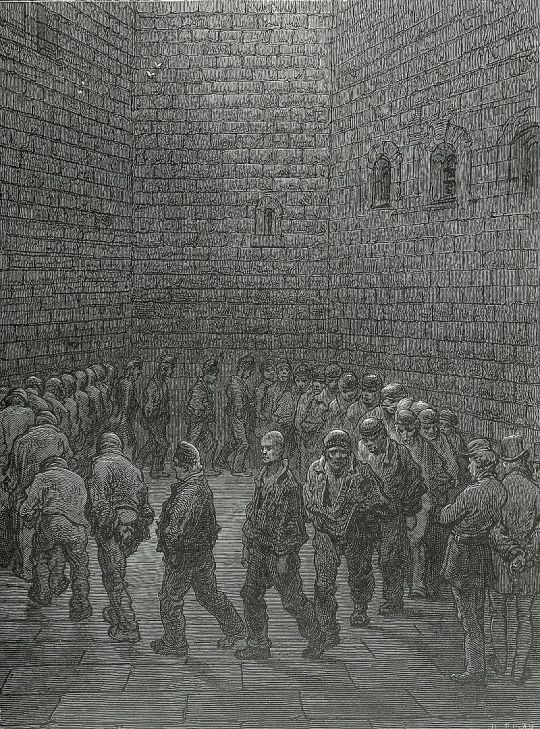
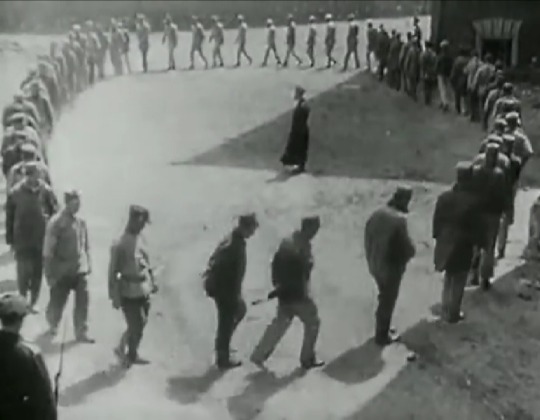
Exercise yard, 1872 — Мать, 1926
#parallels#gustav dore#1872#Prisoners' Round#mat#Мать#1926#silent film#mother 1926#Vsevolod Pudovkin#Pudovkin#Maxim Gorky#Gorky
0 notes
Text

The Duke and Duchess of York watch a Ladies’ Doubles match at Wimbledon, June 24, 1926. // x
Mary Browne and Elizabeth Ryan (USA) defeated Suzanne Lenglen and Julie Vlasto (France)
41 notes
·
View notes
Text

Bertie and Elizabeth with their baby daughter Elizabeth (future Queen Elizabeth II) in December of 1926. They look so sad to me in this photo - this was taken shortly before their tour of Australia and New Zealand. They were going to leave their precious baby for five months!
#sad bertie#sad elizabeth#duke of york#duchess of york#king george vi#queen elizabeth#queen elizabeth ii#elizabeth ii#prince albert#australia bound#1926#british royal family#brf#queen mother#the queen's papa & mummie#george vi#prince albert duke of york#baby queen elizabeth II#bertie & elizabeth#king bertie#historic photos
12 notes
·
View notes
Text
the only thing that's keeping me from unleashing all 90 nonsensical thought trains in my brain about re1999 lore is the fact that im ruled by this very strict mindset of "if youre gonna do something, do it properly/thoroughly/organized or don't do it at all" which means i get to filter all this nonsense for my writing blog so its neat and cohesive
but it also means that until those posts are finished, im just gonna be seething and violently vibrating bc the information is just in my brain waiting to be released into the wild
#SCREAMS anyway the thoughts are the following#the fact that vertin's spinning wheel which she uses to summon arcanists trascends time and space#because if we're going by times of exhibition. pavia shouldve been the first one to be saved (1990's) but canonically it was regulus#which explains why pavia talks about his mother as if she were alive. because vertin PULLS people regardless of time space continuum#that (and a whole different argument) explains that exhibition dates arent dates of births. theyre the year/era they were taken from#because both matilda and pavia are listed as exhibited in the 1990's#theres 11 years of difference between them. if exhibition date = DOB then it would be impossible#aside from the fact that pavia wouldve had to live up to 2015 AT A MINIMUM to be 25 IF he was born in exactly 1990#but theres characters who have more than one exhibition dates. such as satsuki or regulus (only in global iirc?)#so perhaps its the time they were acknowledged as arcanists by whatever government was established at the time?#regulus makes sense since “mid 20th century” encompasses 1930-1960. which correlate to the prologue. 1st and 2nd chapters of the main story#satsukis is harder to explain. since the times listed are just 1910s and 1920s. but it perhaps relates to her story? since she is trying#very hard to leave her past life as a thief behind#people also complain about sweetheart being 17 because 'she doesnt look 17' and since shes based on marilyn monroe she 'must be older'#sweetheart was exhibited in the 1930's. marilyn monroe was born in 1926. more proof that sweetheart was 17 at the time she was summoned#AND that exhibition dates ARENT DOB
9 notes
·
View notes
Text
I'm obsessed with that poll what do you mean your grandma's mother went to collage.
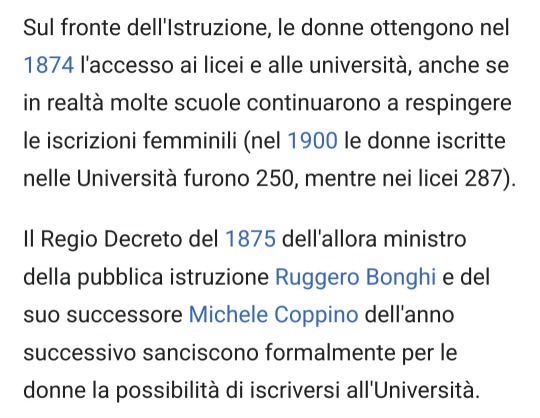
It wasn't even allowed in Italy
#ok my grandma was born in? shit I don't remember hold on#1926 i think#so let's say her mother was born in 1885 more or less#so potentially she could but???? there was war?????#like????#my own mother couldn't go past elementay school she had to take night classes for a middle school diploma when she came here#I'm sorry I'm astonished this is so weird to me#(there was not war in 1885 but it's not like the situation in 'italy' was a good one)#i made a mistake I'm tired#her mother could have been born in 1900#I'm positive she did not have my grandmother at 40yo#even tho my grandmother did have my mom at 40yo#it's a long story
7 notes
·
View notes
Text

1926 Cartier desk clock with circular burgaute lacquer dial inset with cabochon moonstones, mother-of-pearl, enamel, cabochon turquoise, rose-cut diamonds and gold. From Art Deco, Avant Garde and Modernism, FB.
259 notes
·
View notes
Note
would you have any reading suggestions to learn more about the earrings are evil era??? I've never heard of that aspect of fashion history and I am curious
Oh man, it was wild
you saw the first stirrings of it in the 1890s, when you started to get (mostly white and middle-to-upper-class) proto-feminists arguing that ear piercing was barbaric- keep an eye on the racist undertones there; they will come up again-and forcing women to suffer for fashion. I cannot emphasize enough that, until that point, ear piercing had been pretty much normal for this race/class/gender group. For centuries. You see criticism of the practice here and there, but nothing that really stuck.
The objections slowly increased until roughly the mid-1920s, when everything reached a tipping point and pierced ears became largely taboo for most white Americans and Brits of northern/western European descent. If that sounds HIGHLY specific, it is- communities from southern and sometimes eastern Europe retained cultural practices of ear piercing, to the point where it was often used as a point against them by mainstream society. It was also associated with Latino people, Black people, and the Romani, which. Yeah. I don't need to tell you how that went down.
It also developed associations with sexual immorality and/or backwards thinking. One newspaper letter I read came from a teen girl in the 1940s, wondering why she shouldn't pierce her ears if her very respectable grandmother had piercings. The response was something like "well, they did all sorts of things in the Bad Old Days that we shouldn't do now." True in many ways, or course, but...piercing your ears? That's the hill culture decided to die on as far as antiquated behavior that we should leave behind? Apparently yes.
Earrings themselves never went out of style, which led to the birth of clip-ons and screwbacks. Ironic that the "don't surfer for fashion" crowd was so eager to embrace screwing tiny vices onto your ears, but there we are. My own mother (born 1953) remembers her mother (born 1926) always taking off her screwback earrings immediately after getting home from a party, literally in the foyer of their house the second the door shut. There had been adaptations for unpierced ears before- Little Women, published in 1868, describes Meg March hanging earrings from a flesh-colored silk ribbon tied around the base of her ear -but they'd never caught on like this before.
However, the pendulum was soon to swing back. After just 40 years of Piercing Panic, in the 1960s, girls began piercing their ears again in droves. As piercing moved from the slumber party or summer camp back to the professional jewelers whose families had been early professional piercers in the 19th century- and to befuddled doctors who had no idea what they were doing yet still received piercing requests -cultural commentators had no idea what to make of it. Some decried the new trend while most took an air of bemused neutrality. My personal favorite article expressed surprise that "Space Age misses" were adopting these "Victorian traditions."
(In 1965, my grandmother took Mom to the anesthesiologist down the street who was offering to pierce his young daughter's friends gratis, and got it done. My grandfather had strongly disapproved of the idea, but in the end it took him a week to notice the new earrings.)
As to sources...honestly, I've just gone to Google Books, specified a time frame, and typed in "ear piercing," "pierced ears," "pierce ears," etc. Tons of primary sources at your fingertips, though I'm not always great about documenting or saving what I find. There's not much written about it formally, I've found- no books or scholarly studies. It may just be too close in history to attract much academic attention, though I find it fascinating.
This little blip where something that's been normal for most of western history suddenly became taboo for a hot second.
Also my ear piercings just turned 20 five days ago, commemorating the date that I was taken with much ceremony to Piercing Pagoda (and that horrible gun; it's a wonder I didn't get keloids) to get me out from underfoot while the Thanksgiving feast was being made. Grandma got hers pierced on the same day, at age 78. Happy Birthday, Marzi's ear piercings!
194 notes
·
View notes
Text
sculptures round 3 poll 1


Smok Wawelski (The Wawel Dragon) by Bronisław Chromy, 1969:
propaganda: This is a famous and beloved statue outside of Wawel Castle (pronounced Vavel) in Kraków. The story of Smok Wawelski goes that he'd been eating all the animals (and people?) in Kraków so the king ordered his sons to kill him, but obviously the dragon is very dangerous. The princes tricked him by filling animals with tar and leaving them out. He ate them and when he tried to breathe fire, his insides burned up. There is a second version that says a cobbler tricked him into eating a tar-filled sheep and the tar made him so thirsty he drank the Wisła (the Vistula, the river that runs through Kraków) until he burst.
Fun fact, those are not extra arms but rather extra heads. Also, you can text the dragon to ask him to breathe fire, and then he does. He gets thousands of texts a day.
about the artist: When I was a kid, I was sure this statue was the actual Smok Wawelski that had somehow carbonized over a thousand years, but alas no, a guy made it in 1969 out of bronze. Bronisław Chromy was an artist, a professor, and Dragon Mother. He passed away in 2017.
Fryderyk Chopin monument in Łazienki by Wacław Szymanowski, 1926 :
[no propaganda has been submitted]
[Fryderyk Chopin]
[read about the history of the monument]
120 notes
·
View notes
Text







Charles Gates Sheldon • Dolores Costello, 1920's Dolores Costello was born September 17, 1903. She made her first film appearance in the years 1909 – 1915 as a child actress, along with her younger sister Helene, for the Vitagraph Film Company, and was the daughter of actor Maurice Costello, who was the first great matinee idol of the Nickelodeon Age. When she was 17 years old, she lived for a while in New York City, and was the model for many notable illustrators of the era. Within a few years of achieving stardom, the delicately beautiful blonde-haired actress had become a successful and highly regarded film personality in her own right, and as a young adult her career developed to the degree that in 1926, she was named a Wampas Baby Star, and was nicknamed "The Goddess of the Silver Screen." Costello spoke with a lisp (something that her granddaughter, Drew Barrymore, seemingly inherited), and found it difficult to make the transition to talking pictures, but after two years of voice coaching she was comfortable speaking before a microphone. She married John Barrymore in 1928, who said of her "I just laid eyes upon the most preposterously lovely creature in all the world. She walked into the studio like a charming child, slender and shy and golden-haired. Never saw such radiance. My God ! I knew that she was the one I had been waiting for. Waiting all my life, just for her." When the two starred together in "The Sea Beast" in 1926, Dolores fainted in John's arms during their kissing scene. However her marriage to John Barrymore proved to be a difficult one due to his increasing alcoholism, and they divorced in 1935. Costello resumed her career a year later and achieved some successes, most notably in Little Lord Fauntleroy (1936) and The Magnificent Ambersons (1942.) She is the mother of John Drew Barrymore, grandmother of Drew Barrymore, and has a star on the Hollywood Walk of Fame for her contributions to Motion Pictures
119 notes
·
View notes
Text
Today I learnt that the Pevensie children have middle names and actual dates of birth according to props used in the 2005 film:
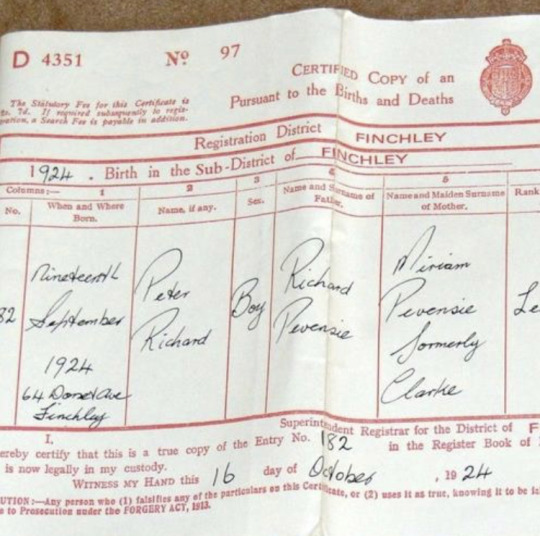
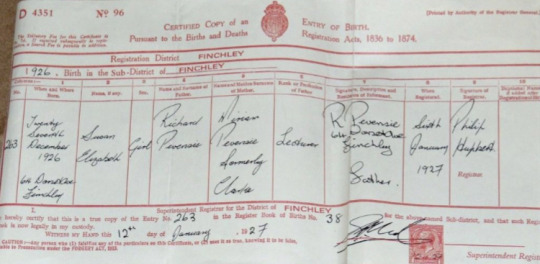

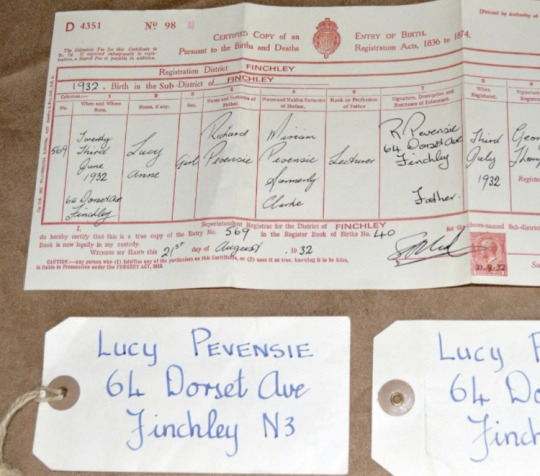
Peter Richard Pevensie - b. 19th September 1924
Susan Elizabeth Pevensie - b. 27th December 1926
Edmund George Pevensie - b. 8th May 1929
Lucy Anne Pevensie - b. 23rd June 1932
Apparently LWW is set in 1940, so depending on what month it’s set in, it means Peter would be about 16, Susan us around 13-14, Edmund is 11 and Lucy about 8 (depending on what time of year the story takes place)
Also worth noting that this says Mr Pevensie is called Richard (Peter’s middle name obviously is after his father) and that Mrs Pevensie is called Miriam, whilst in the film Lucy says her mother’s name is “Helen”. Apparently in the original script it was Miriam, so I think they changed it last minute (and also Georgie’s mum was called Helen)
2K notes
·
View notes
Text
Seeking a book to read this winter break?
Brand "New" List of Additions to the Arthurian Preservation Project Archive
In time, all books will be added to my Retellings List or Medieval Literature List respectively, and possibly a third page for handbooks/informational resources. Retellings may be under construction for a bit as I reformat to accommodate the influx in links. There are some duplicates—Alan Lupack's and Mike Ashley's anthologies occasionally contain a one-off story I've otherwise included in an individual volume of collected works by the author.
Links connect to corresponding PDFs on my Google drive where they can be read and downloaded for free. But if you like what I do, consider supporting me on Ko-Fi. I haven't yet read these listings in full; I cannot attest to their content or quality. A big thank you to @wandrenowle for the help collecting!
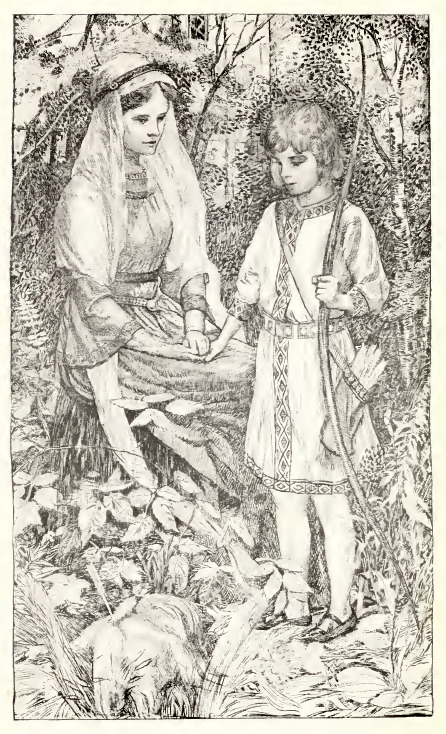
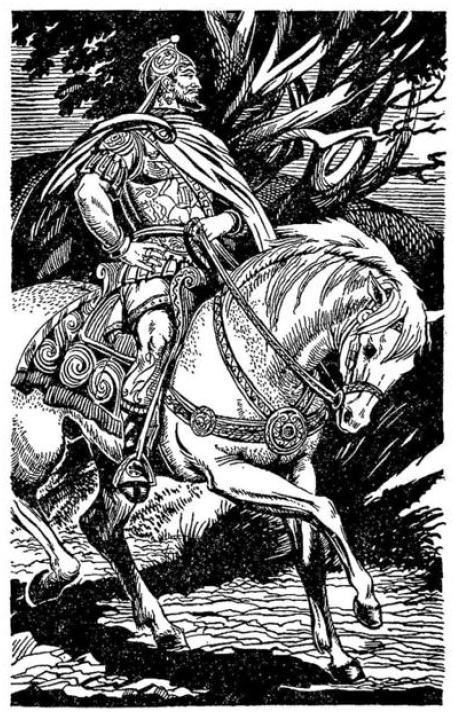
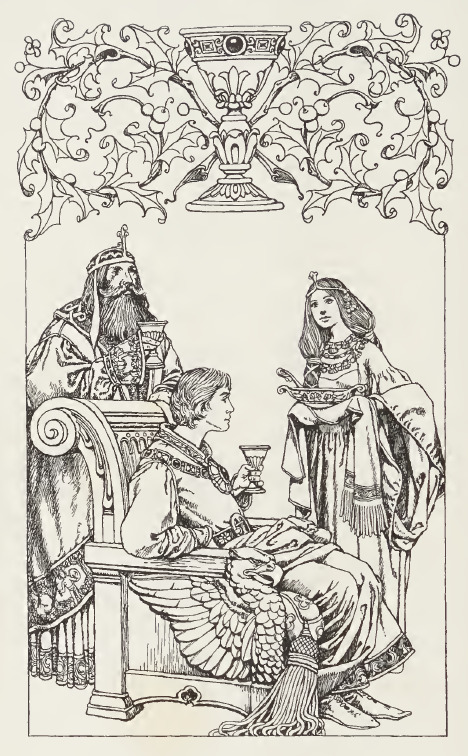
Modern Retellings
Merlin in Love by Aaron Hill (1790) — Opera about Merlin & his love interest Columbine.
The Fortunate Island by Max Adeler (1882) — A family shipwrecks on an island only to discover its populated with Arthurian knights, including Dinadan, Bleoberis, & Agravaine.
Sir Marrok by Allen French (1902) — Werewolf knight.
The Story of Sir Galahad by Mary Blackwell Stirling (1908) — Illustrated retelling of Malory's Grail Quest.
The Story of Parzival by Mary Blackwell Stirling (1911) — Illustrated retelling of Eschenbach's Parzival.
Stories From King Arthur and His Round Table by Beatrice Clay (1913) — Illustrated retelling of Malory.
Cloud Castle and Other Papers by Edward Thomas (1922) — Contains two Arthurian entries: the story Bronwen The Welsh Idyll about Agravaine & his lady Bronwen, & the essay Isoud about the Prose Tristan.
Collected Poems by Rolfe Humphries (1924-1966) — Contains Dream of Rhonabwy about Owain & Arthur's chess game, A Brecon Version about Essylt/Trystan, Under Craig y Ddynas about Arthur's "sleeping" warriors, & The Return of Peredwr about the Grail Hero's arrival to court.
Peronnik the Fool by George Moore (1926) — The quest for the Holy Grail based on Breton folklore.
The Merriest Knight by Theodore Goodridge Roberts (1946-2001) — Anthology of short stories all about Dinadan.
The Eagles Have Flown by Henry Treece (1954) — A third Arthurian novel from Treece detailing the rivalry between Artos & Medrawt, with illustrations this time.
Launcelot, my Brother by Dorothy James Roberts (1954) — The fall of Camelot from Bors perspective, as a brother of Launcelot.
To the Chapel Perilous by Naomi Mitchison (1955) — Two rival journalists report about the goings on in Camelot.
The Pagan King by Edison Marshall (1959) — Historical fiction from the perspective of Pagan King Arthur.
Kinsmen of the Grail by Dorothy James Roberts (1963) — The Grail Quest but Gawain is Perceval's step dad.
Stories of King Arthur by Blanche Winder (1968) — Illustrated retelling of Malory.
Drustan the Wanderer by Anna Taylor (1971) — Retelling of Essylt/Drustan.
Merlin's Ring by H. Warner Munn (1974) Gwalchmai is a godson of Merlin's that uses his ring to travel through the magical & real worlds.
Lionors, Arthur's Uncrowned Queen by Barbara Ferry Johnson (1975) — Story of Arthur's sweetheart & mother of his son, Loholt.
Gawain and The Green Knight by Y. R. Ponsor (1979) — Illustrated prose retelling of SGATGK poem.
Firelord (#1), Beloved Exile (#2), The Lovers: Trystan and Yseult (#3) by Parke Godwin (pseudonym Kate Hawks) (1980-1999) — Book 1 Arthur, book 2 Guinevere, book 3 Trystan/Yseult.
Bride of the Spear by Kathleen Herbert (1982) — "Historical" romance retelling of Teneu/Owain.
Invitation to Camelot edited by Parke Godwin (1988) — Anthology of assorted Arthurian stories from authors like Phyllis Ann Karr & Sharan Newman.
Arthur, The Greatest King - An Anthology of Modern Arthurian Poems by Alan Lupack (1988) — Anthology of modern Arthurian poetry by various authors including E. A. Robinson, William Morris, C. S. Lewis, & Ralph Waldo Emerson.
The White Raven by Diana L Paxson (1988) — "Historical" romance retelling of Drustan/Esseilte.
Merlin Dreams by Peter Dickinson (1988) — Illustrated by Alan Lee.
The Pendragon Chronicles edited by Mike Ashley (1990) — An anthology of Arthurian stories, including some translations such as the Lady of the Fountain, and retellings by John Steinbeck & Phyllis Ann Karr.
Grails: Quest of the Dawn edited by Richard Gilliam (1992-1994) — Anthology of Grail Quest stories.
The Merlin Chronicles edited by Mike Ashley (1995) — Anthology about Merlin from authors like Theodore Goodridge Roberts & Phyllis Ann Karr.
The Chronicles of the Holy Grail edited by Mike Ashley (1996) — Anthology about the Holy Grail from authors like Cherith Baldry & Phyllis Ann Karr.
The Chronicles of the Round Table edited by Mike Ashley (1997) — Anthology of assorted Arthurian stories from authors like Cherith Baldry & Phyllis Ann Karr.
Sleepless Knights by Mark H Williams (2013) — 1,500 years have passed but Lucan the Butler’s still on the clock.
Medieval Literature
Three Arthurian Romances (Caradoc, The Knight with The Sword, The Perilous Graveyard) [This is on the Internet Archive & cannot be downloaded. If someone could help with that, lmk!] translated by Ross G. Arthur
Le Bel Inconnu (The Fair Unknown) translated by Colleen P. Donagher
Segurant The Knight of the Dragon (Portuguese) edited by Emanuele Arioli
An Anglo-Norman Reader by Jane Bliss
Stanzaic Morte Arthur / Alliterative Morte Arthure edited by Larry D. Benson
Sir Perceval de Galles / Ywain and Gawain edited by Mary Flowers Braswell
Sir Gawain: Eleven Romances and Tales edited by Thomas Hahn
Prose Merlin edited by John Conlee
The Middle English Breton Lays edited by Eve Sailsbury & Anne Laskaya
Il Ciclo Di Guiron Le Courtois Volumes 1-7 (Italian)
Wace's Roman de Brut / Layamon's Brut by Robert Wace & Eugene Mason
Arthurian Literature by Women edited by Alan Lupack & Barbara Tepa Lupack
Handbooks
Studies in the Fairy Mythology of Arthurian Romance by Lucy Allen Paton (1960)
A Companion to the Gawain-Poet edited by Derek Brewer (1990)
The Mammoth Book of King Arthur edited by Mike Ashley (2005)
A Bibliography of Modern Arthuriana 1500-2000 by Ann F. Howey & Stephen R. Reimer (2006)
#arthurian preservation project#arthuriana#arthurian mythology#welsh mythology#arthurian legend#arthurian literature#king arthur#queen guinevere#sir gawain#sir lancelot#sir percival#sir perceval#sir mordred#sir galahad#sir owain#sir yvain#sir kay#sir bedivere#sir bedwyr#merlin#sir tristan#queen isolde#sir marrok#sir lucan#lionors#sir loholt#sir bors#sir agravain#sir agravaine#my post
102 notes
·
View notes
Text
A few other wonderful shows I wanted to shoutout for BIPOCtober, with BIPOC creators and/or leads:
A Ninth World Journal: Based on Numenera, a tabletop roleplaying game, and written, produced and performed by David S. Dear (plus guests). Set one billion years in the future… it’s the story of Januae, a man who randomly teleports to strange and dangerous places with no way of controlling it.
@meteorcitypod: In 2008, a freak meteor shower hit Detroit, killing hundreds and displacing thousands. Hundreds of people were quarantined for radiation exposure. 10 years later, Bianca Diaz, a vlogger returns to tell the stories of the dead, the missing, and the remaining citizens of Detroit, now called Meteor City. Shortly after returning, Bianca realizes that Meteor City, New Detroit, and the people left behind are not what they appear to be...
@witcheverpath: An interactive horror anthology podcast. Their current story is Message in a Bottle. A siren misses what was taken from her, but as she swims out to sea, she discovers a bottle that may change the course of her life.
@radio-outcast: A fantasy-western audio drama. When Helix, the Messenger God of Sound, gets yanked from the 1980s and sent to the 1880s by her abusive ex-lover, the God of Time, she must forge unlikely alliances with two humans: Jesse, a cowboy out for revenge, and Charles, a conman running from his past. The three of them embark on a journey across the American West, each with their own goals and secrets waiting to be revealed
@vegapodcast: A Sci-Fi Adventure Podcast!: In a fantasy futuristic world, Vega Rex is employed by her government to kill off the world's worst criminals. She's never met a criminal she couldn't catch...until now. Join Vega as she journeys through a world of bumbling apprentices, powerful technogods, and her biggest challenge yet
@noadventurespod: A fantasy (un)adventure story that follows Sig, the owner of Signature Eats bakery, as he aggressively avoids becoming embroiled in any daring quests or chosen one shenanigans even though the universe really seems to want him to do just that. This is a story about cutting the Hero’s Journey off at the knees to chill with friends. And also baking. This is also a story about baking.
Harlem Queen: A Black historical fiction audio drama based on the life and times of Black, woman, gangster "Numbers Queen" Madame Stephanie St. Clair during the Harlem Renaissance (the story takes place around 1926-32). She fought the "big boys" (Lucky Luciano and Dutch Schultz) and won.
@herebedragonspod: When the body of a previously unknown aquatic creature washes up on shore, four women are called together for the expedition of a lifetime. Tasked by the U.S. Government to find and record evidence of this new breed of sea monster, Harper Bennett, Pippa Cambell, Lt. Commander Adrienne Scarlett and Dr. Natalya Atlas set off into the untamed wilds of The Bermuda Triangle.
@unwellpodcast: A Midwestern Gothic Mystery. Lillian Harper moves to the small town of Mt. Absalom, Ohio, to care for her estranged mother Dorothy after an injury. Living in the town's boarding house which has been run by her family for generations, she discovers conspiracies, ghosts, and a new family in the house's strange assortment of residents.
Fan Wars: The Empire Claps Back: A not-so-romantic comedy about two star wars fans on opposite sides of the Last Jedi debate.
#a ninth world journal#meteor city pod#witchever path#radio: outcast#vega podcast#unwell podcast#harlem queen#absolutely no adventures#here be dragons#here be dragons podcast#fan wars: the empire claps back#bipoctober#podcast recs
109 notes
·
View notes
Photo

Smallsword. ca. 1750. Credit line: Gift of Jean Jacques Reubell, in memory of his mother, Julia C. Coster, and of his wife, Adeline E. Post, both of New York City, 1926 https://www.metmuseum.org/art/collection/search/22940
#aesthetic#art#abstract art#art museum#art history#The Metropolitan Museum of Art#museum#museum photography#museum aesthetic#dark academia
70 notes
·
View notes
Text
Sooo you're used to it by now, here's my 4th special pride post, and today we're going to talk about
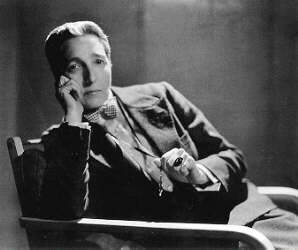
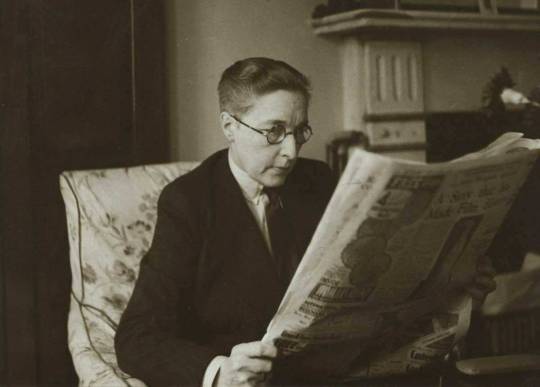
Marguerite Radclyffe-Hall !
Marguerite was born in 1880 and died in 1943. She was a British poet and writer, author of "The Well of Loneliness", a revolutionary and very important novel in lesbian literature. She never tried to hide her homosexuality.
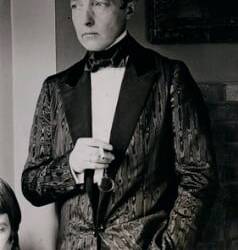
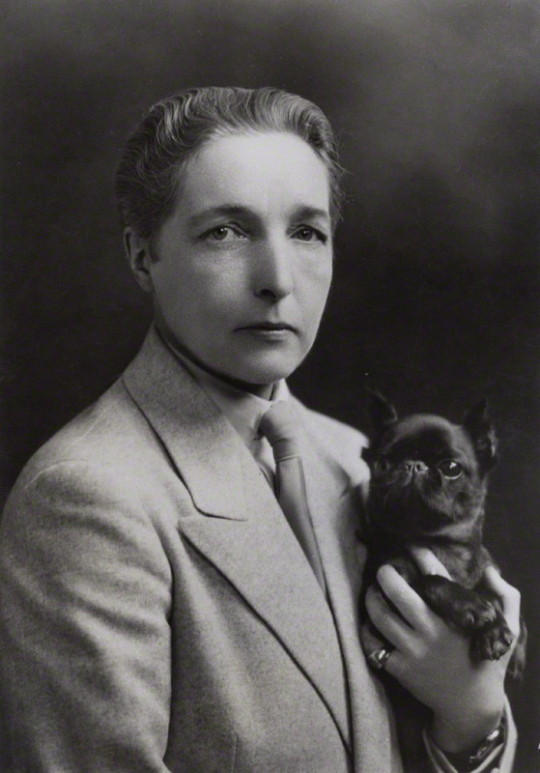
Neglected by her parents as a child, she studied at King's College London, then in Germany. She reached adulthood without a vocation, and spent a big part of her twenties in a series of relationships with women who later left her to marry.
In 1907, at the spa town of Bad Homburg in Germany, Marguerite met Mabel Batten, a lieder singer nicknamed Ladye, and the two fell in love. Batten was 51 at the time, with a husband, grown-up daughter and grandchildren. Hall was 27.
The two move in together when Mabel's husband dies. At the time, Marguerite was known for her "masculine" appearance and constant wearing of "masculine" clothes; Mabel Batten nicknamed her "John", a nickname she kept all her life.
In 1915, Radclyffe-Hall fell in love with Una Troubridge, a cousin of Mabel's whom she had known for 10 years. Battel died the following year, and in 1917, the two women moved in together. The two lived together until Hall's death, despite Hall's many affairs (that Troubridge painfully tolerated).
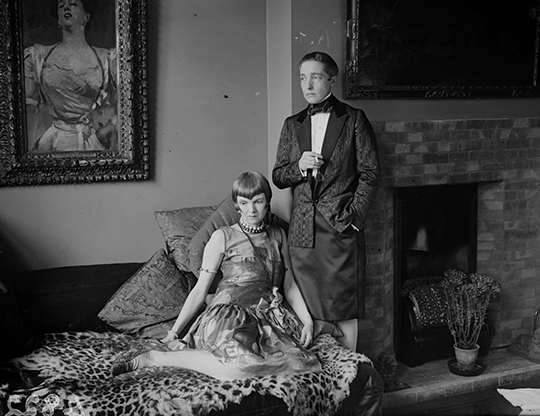
She has written eight novels and several poems.
Her first novel, "The Unit lamp", (1924) tells the story of a young girl who dreams of moving into a London apartment with her friend Elizabeth (a so-called "Boston marriage") and studying to become a doctor, but feels trapped by her emotionally-dependent, manipulative mother.
The novel's length and complexity made it difficult to sell, so Marguerite chose a lighter theme for her next novel, a social comedy : "The Forge". The book was quite successful this time.
Her next two novels were a great success, especially "Adam's Breed" (1926), which won the Prix Femina and the James Tait Black Award, something that had only been achieved once before.
But her best-known novel is "The Well of Loneliness". Published in 1928, it tells the story of a butch lesbian, from her childhood in England to her stay in Paris, where she becomes a famous writer. The novel was the subject of an obscenity trial in the UK (despite not being sexually explicit), resulting in the destruction of all copies. The USA authorized its publication after a long, long legal battle. Considered a classic, an extremely important work of lesbian literature, "The Well of Loneliness" was 7th on Publishing Triangle's 1999 list of the best gay novels.
In 1930, Hall won the gold medal of the Eichelbergher Humane Award. She was a member of the PEN club, the Council of the Society for Psychical and a member of the Zoological Society of London.
She died of colon cancer in 1943, aged 63. Her impact on literature, and lesbian literature in particular, remains significant to this day.
You can find the list of her novels (and more details about her life) here !
And some of her poems here :
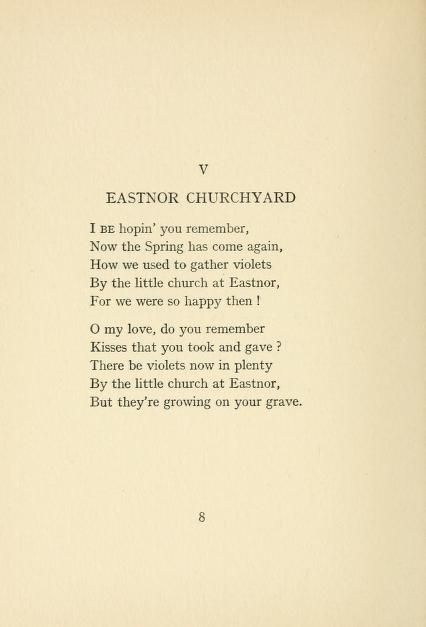
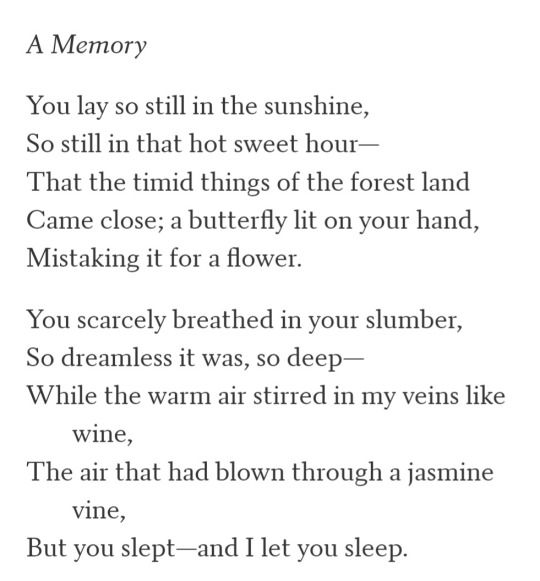
Hope you enjoyed, and see you tomorrow for the 5th post!
#lesbian#pride#pride month#lesbian pride#lesbian history#lesbian writer#lesbian poet#radclyffe hall#marguerite radclyffe-hall#butch lesbian#lgb history#female homosexuality#female homosexual#women's history#herstory
188 notes
·
View notes
Text
Making a little list of what age the women in the Wizarding World had their first child. I'm just taking this info from HP Wiki and this graph and organizing it chronologically
Merope - 19 years old (Tom born in 1926)
Euphemia Potter - was of 'advanced age' ~1979, 19 yrs after having James - (1960 - avg age of mother at 1st birth in UK was 24.5)
Molly - 20-21 (1970 - avg age 23.7)
Andromeda - about 19-20 (1972-73 - avg age about 23.9)
Narcissa - 25 (1980 - avg age 24.7)
Petunia (Muggle) - 21 or older (1980)
Alice Longbottom - at least 21, but probably older because she had a career as an Auror - (1980)
Lily - 20 (1980)
Bellatrix - 45-47 (1996-98? - avg age about 26.1)
Tonks - 24-25 (1998 - avg age 26.3)
Fleur - 22-25 (2000-02 - avg age about 26.6)
Ginny - 22-23 (2003-04 - avg age about 27)
Hermione - 26 (2005-2006 - avg age about 27.3)
Luna - 26-33 (2008-2014 - avg age between 27.5-28.5)
There are a number of women that aren't mentioned to have children: McGonagall, Rita Skeeter, Umbridge, Sprout, Trelawney, Madam Pomfrey, Bathilda Bagshot...
Also remember that there are a number of characters that have been given fanon identities who don't have ages in canon, specifically a lot of members of the Order being imagined to be Lily and James's age - There's nothing saying Alice Longbottom or Marlene McKinnon were around the Potters' age.
Did the witches in HP have their first child younger than the average age in the Muggle world? Yes, they often did. Though perhaps not as much as it seems at first glance (given the Weasleys & the Potters are really visible in the story). Also it's quite a small sample size.
This is just the age they were at the birth of their first child, and some of them had multiple children. For example, Molly Weasley had her last child at age 31-32.
This brings up a lot of questions like: what was the author trying to say about the fictional world or the characters? Why did she design her world that way, what was she trying to communicate or show you about it? What does it say about James and Lily as people that they got married and had a baby so young? What does it say about the atmosphere of the war at that time? Molly Weasley actually comments on that in HBP: 'people think they might be dead tomorrow, so they’re rushing all sorts of decisions they’d normally take time over. It was the same last time he was powerful, people eloping left, right, and center...'
Is this due to the small size of the Wizarding World? Maybe it's harder to meet new people after Hogwarts? Maybe it's just impacted a lot by how many of these characters lived in wartime? Maybe it's connected to how traditional the Wizarding World was in other aspects? Lots of interesting explanations and analyses can be made...
#let me know any others to add#the math is approximately correct I believe#hp meta#harry potter#harry potter meta#wizarding world
54 notes
·
View notes
Text
Clara Bow - Dancing Mothers (1926)

#clara bow#dancing mothers#1926#silent screen beauty#silent screen goddess#1920's#cropped photo#b/w photography#silent hollywood
57 notes
·
View notes